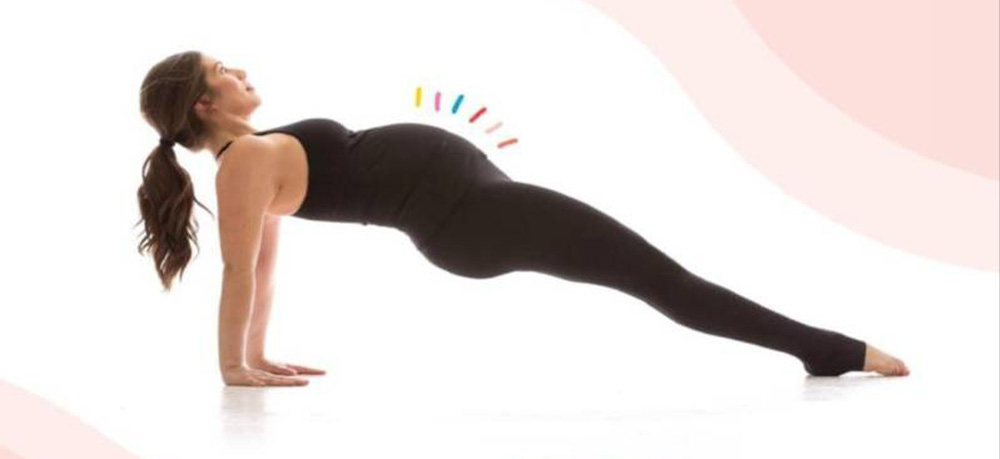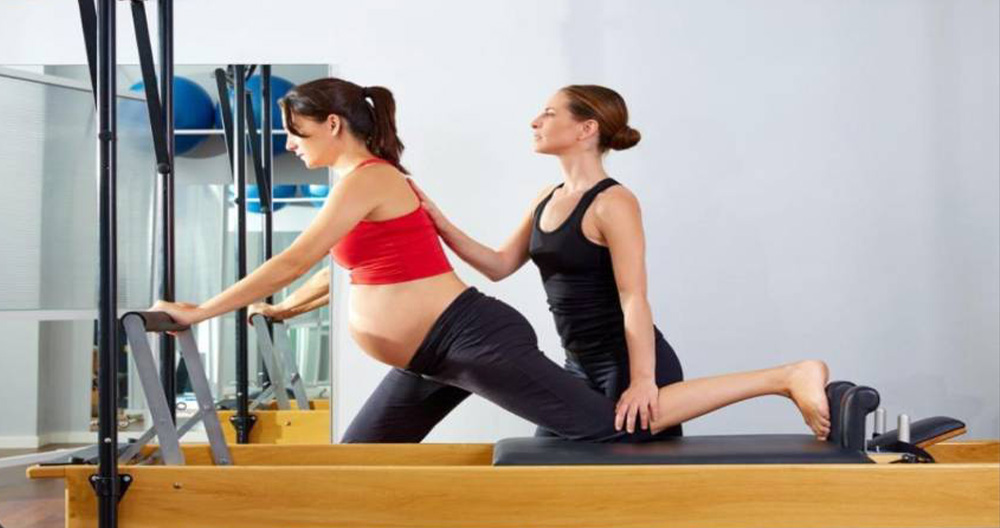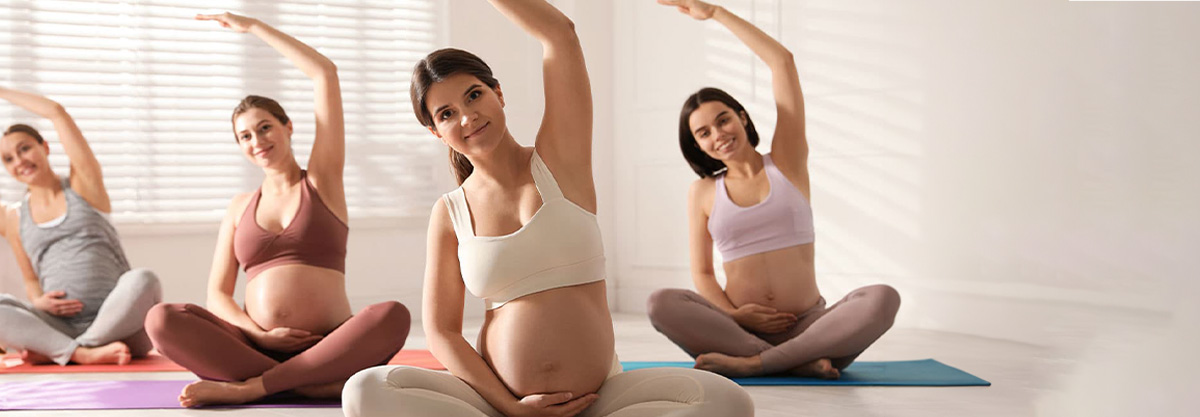
01 Aug, 2025 Pilates in Pregnancy Part 2
Safety Guidelines for Pilates in Pregnancy:
1. Avoid Lying on the Back (After First Trimester)
After 16 weeks, supine positions (lying flat on the back) during Pilates in pregnancy or any pregnancy exercise can compress the vena cava (a major vein), reducing blood flow and causing dizziness or nausea.
2. Avoid Overstretching
- Hormonal changes during pregnancy (especially relaxin) make joints looser.
- Be cautious during stretching in prenatal Pilates or pilates for pregnant women to avoid ligament injuries.
3. No Breath-Holding or Intense Core Work
- Do not perform Valsalva maneuver (breath holding during exertion).
- Avoid intense core strength exercise or abdominal strength exercise like crunches or planks, especially in the second and third trimesters.

4. Focus on Stability and Balance
- As the center of gravity shifts, balance decreases.
- Use props like pillows, blocks, or a chair for support during standing exercises in prenatal yoga and Pilates.
5. Hydration and Ventilation
- Stay hydrated and avoid overheating.
- Exercise in a well-ventilated, cool area, especially when doing pregnancy exercise sessions.

6. Listen to Your Body
- Fatigue is normal in pregnancy. If you feel pain, dizziness, shortness of breath, or uterine contractions, stop immediately.
- Every pregnancy is different — rest when needed during pilates sessions.
Common Myths About Pilates During Pregnancy:
Myth 1: Pilates is not safe during pregnancy.
Fact:
Prenatal Pilates is generally safe and highly beneficial when practiced under guidance and with appropriate modifications. It improves posture, reduces back pain, strengthens the pelvic floor, and prepares the body for childbirth.
Myth 2: You can’t do any core work when pregnant.
Fact:
While intense abdominal exercises (like crunches) should be avoided, gentle core strength exercise is essential during pregnancy. Pilates for pregnant women focuses on deep core muscles, especially the transverse abdominis, which helps support the growing belly and prevent back pain and diastasis recti.
Myth 3: You should stop Pilates after the first trimester.
Fact:
Pilates in pregnancy can be safely continued throughout all trimesters with appropriate modifications (like avoiding lying on the back or high-resistance exercises). It’s about adapting the routine—not stopping it entirely.
Myth 4: Pilates can cause miscarriage.

Fact:
There is no scientific evidence that Pilates for pregnant women causes miscarriage. When done correctly, it’s a low-impact and safe form of pregnancy exercise that actually supports a healthy pregnancy.
Myth 5: Pilates will make labor harder.
Fact:
Prenatal Pilates improves breath control, stamina, and pelvic floor strength, all of which help with labor and delivery. It also improves body awareness, which is helpful during contractions and pushing.
Myth 6: Only fit women can do Pilates in pregnancy.
Fact:
Pilates in pregnancy can be started at any fitness level. There are beginner-friendly, gentle routines designed especially for first-timers and non-exercisers.
Myth 7: You shouldn’t exercise if you’re tired.
Fact:
Mild fatigue is common, but gentle movement like prenatal yoga and Pilates can actually increase energy levels and improve sleep, mood, and circulation—benefiting both mother and baby.
By Dr. Riya
(Pilates Instructor & Sports Physiotherapist at AOSM)
& Dr. Janwi
(Consultant Physiotherapist at AOSM)
